- TPLO practical implementation in the doc4pets Academy Idar-Oberstein on September 9th, 2024
- 1. Introduction
- 2. What is TPLO?
- 3. Importance of TPLO in veterinary care
- 4. Practical implementation of TPLO surgery
- 5. TPLO training at the doc4pets Academy
- 6. Professional expertise and guidance
- 7. Case studies and experience reports
- 8. Future developments in TPLO surgery
- 9. Conclusion
TPLO practical implementation in the doc4pets Academy Idar-Oberstein on September 9th, 2024
1. Introduction
Tibial Plateau Leveling Osteotomy (TPLO) is a widely used surgical technique used to treat cruciate ligament injuries in dogs. Cruciate ligament tears are one of the most common orthopedic problems in dogs, and TPLO provides an effective solution to restore joint stability.
On September 9th, 2024 - for the fifth time in total and for the second time here in Idar-Oberstein - a practical training course on TPLO surgery took place at the doc4pets Academy in Idar-Oberstein. This event was organized by PD Dr. Bianca Hettlich, an experienced specialist in this field. Participants had the opportunity to learn and deepen the practical skills required to perform this complex operation under her guidance. The training offered a comprehensive introduction to the theoretical basics of TPLO as well as practical exercises in which participants worked directly on models.
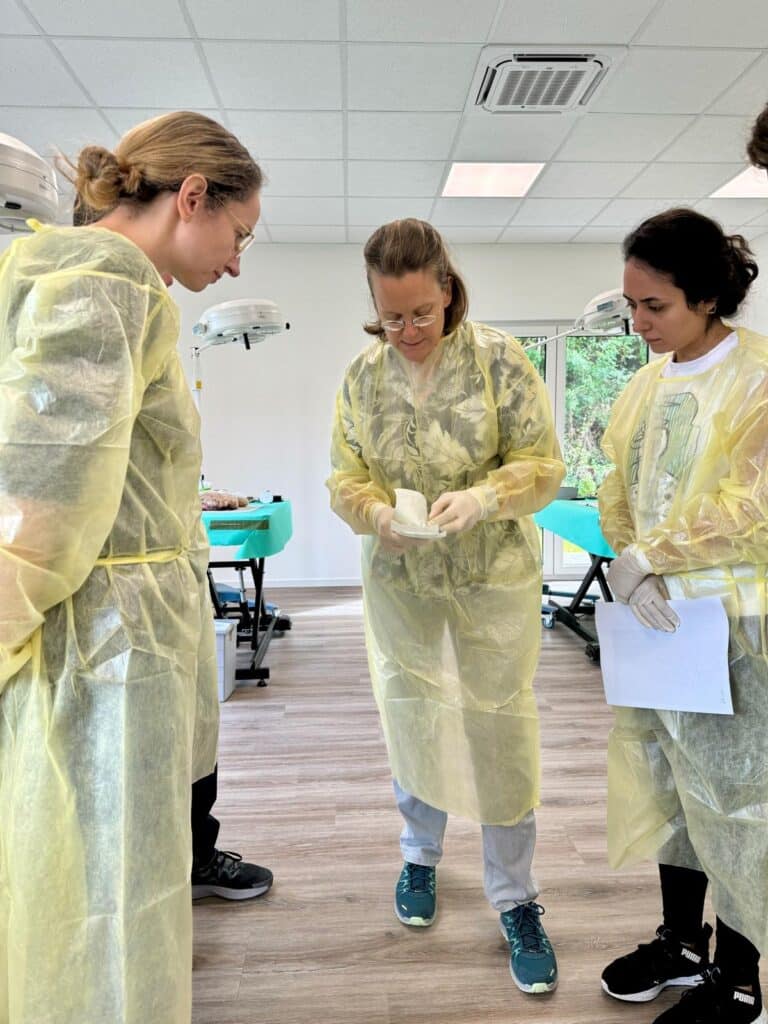
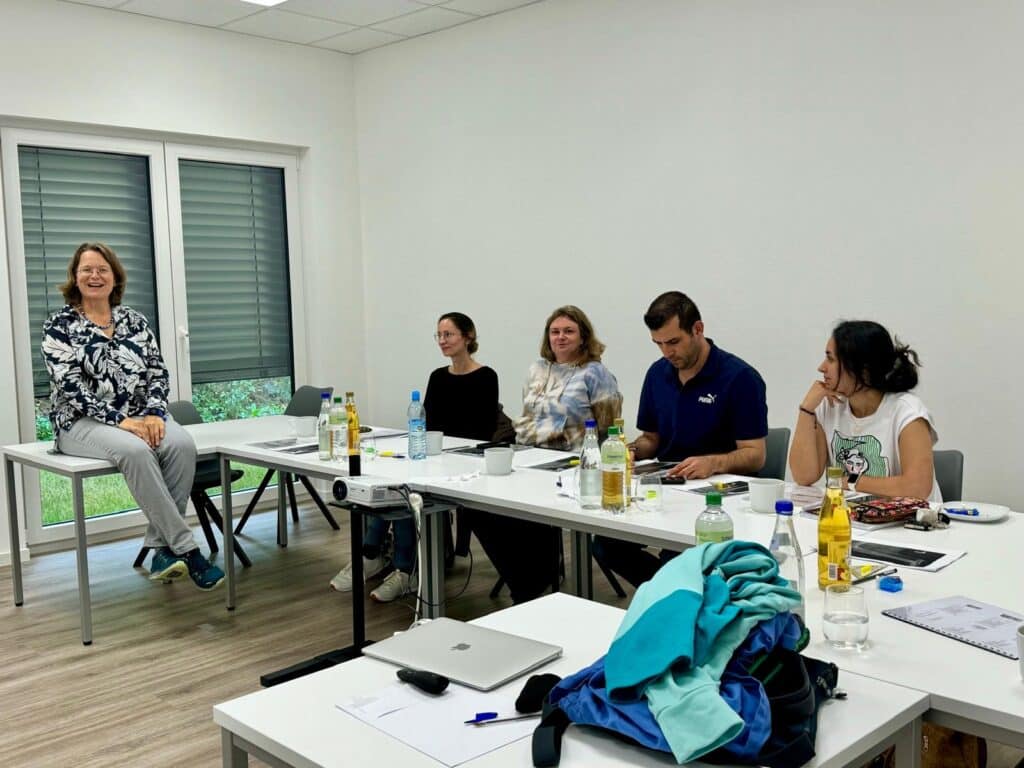
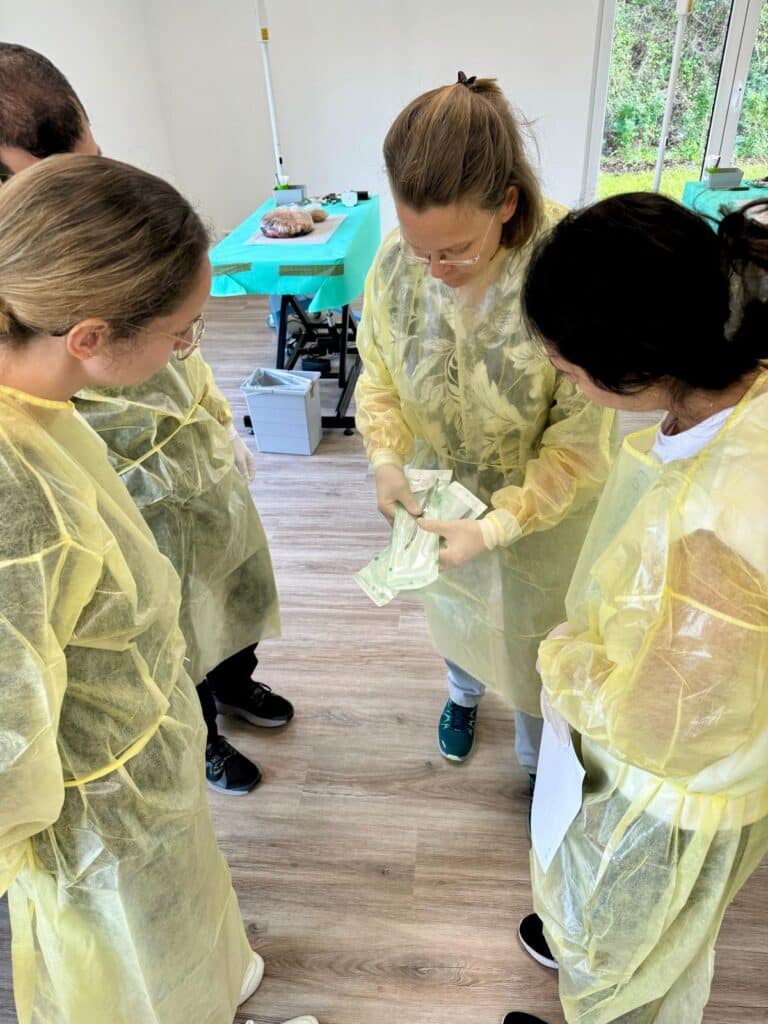
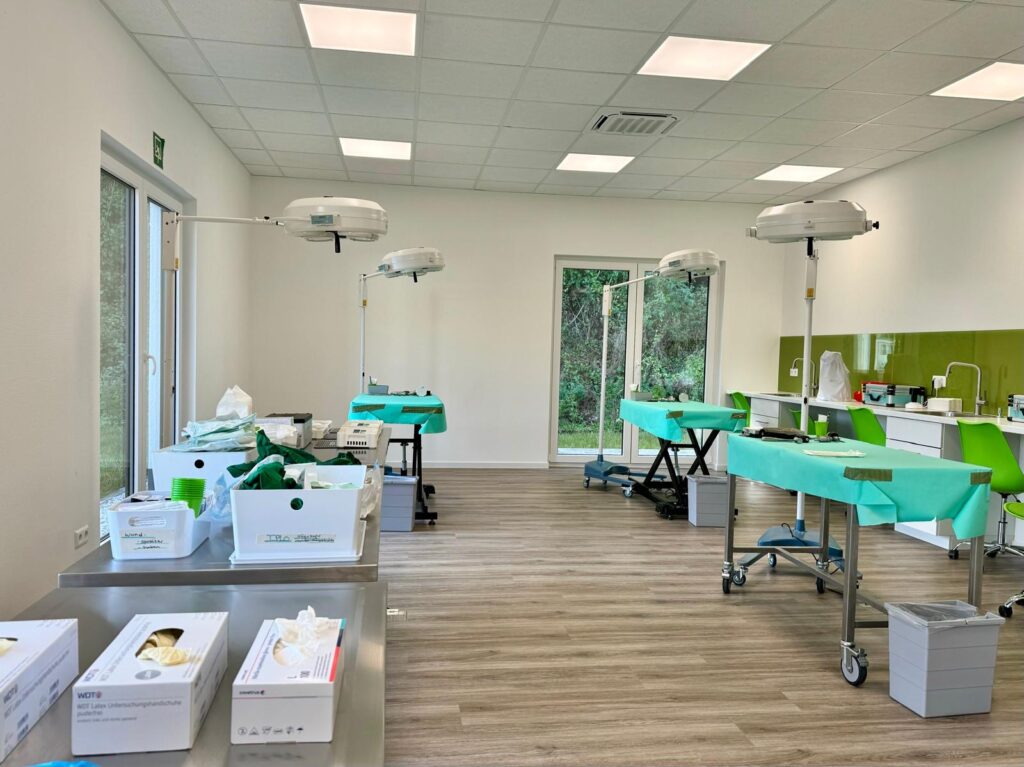
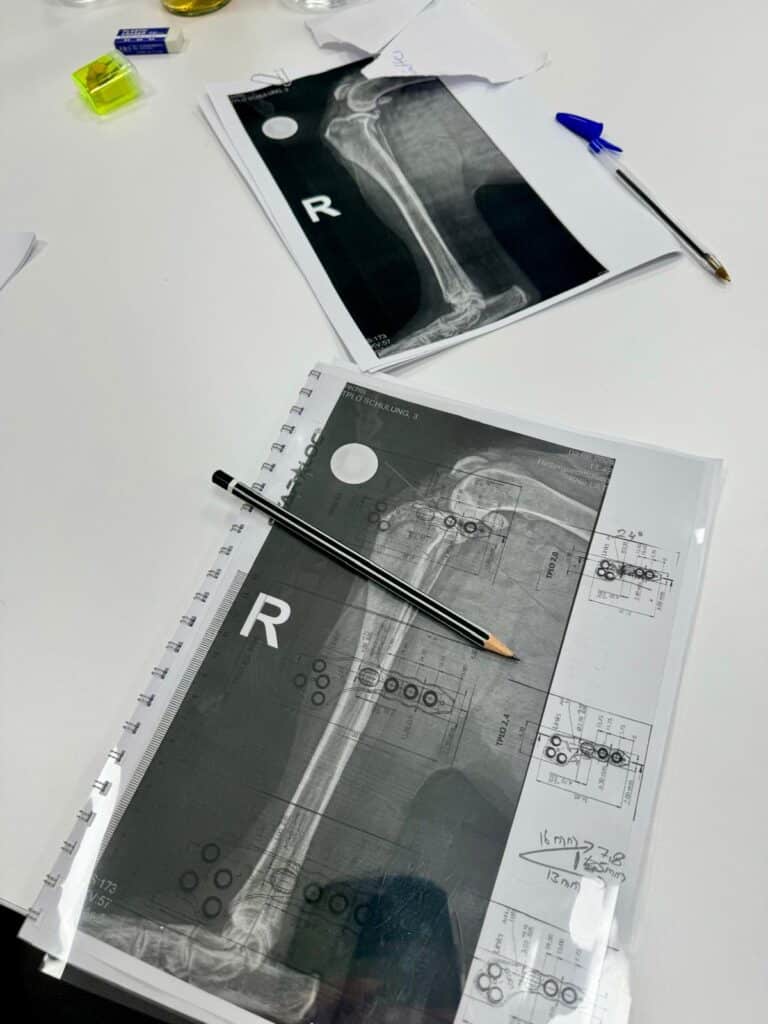
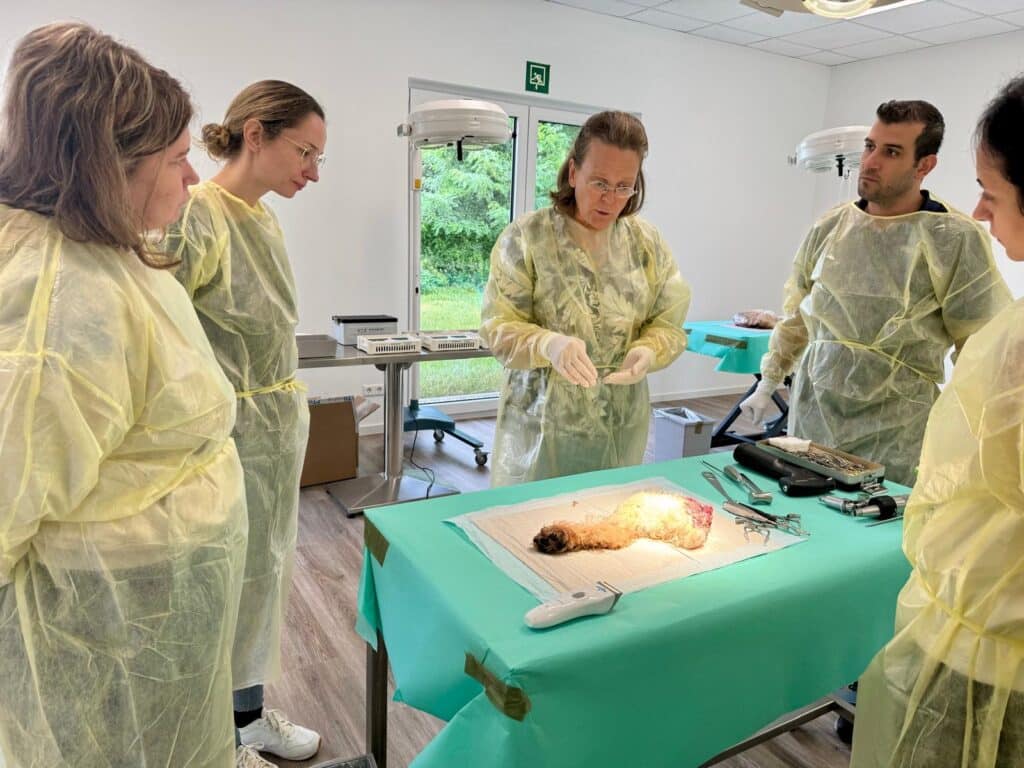
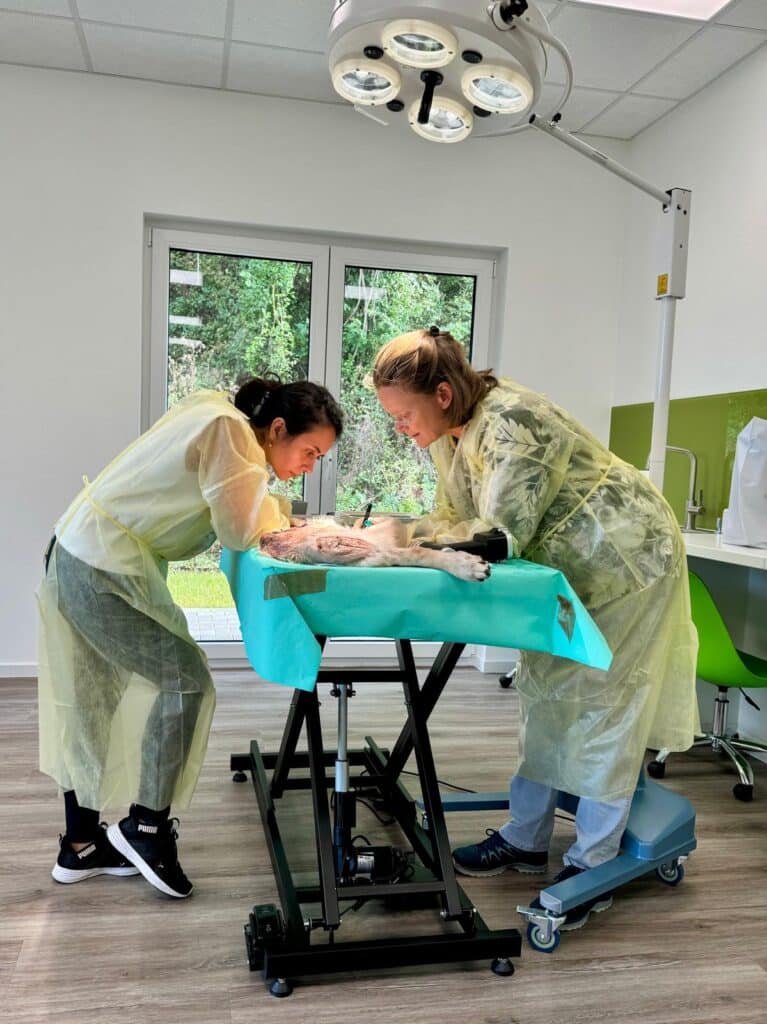
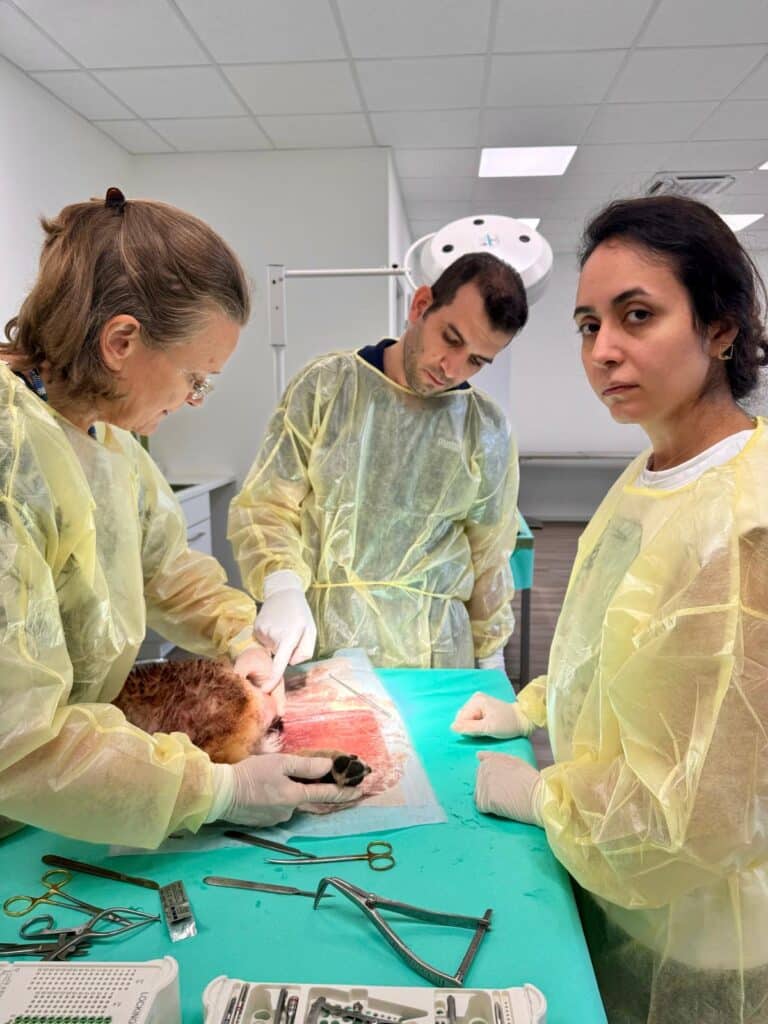
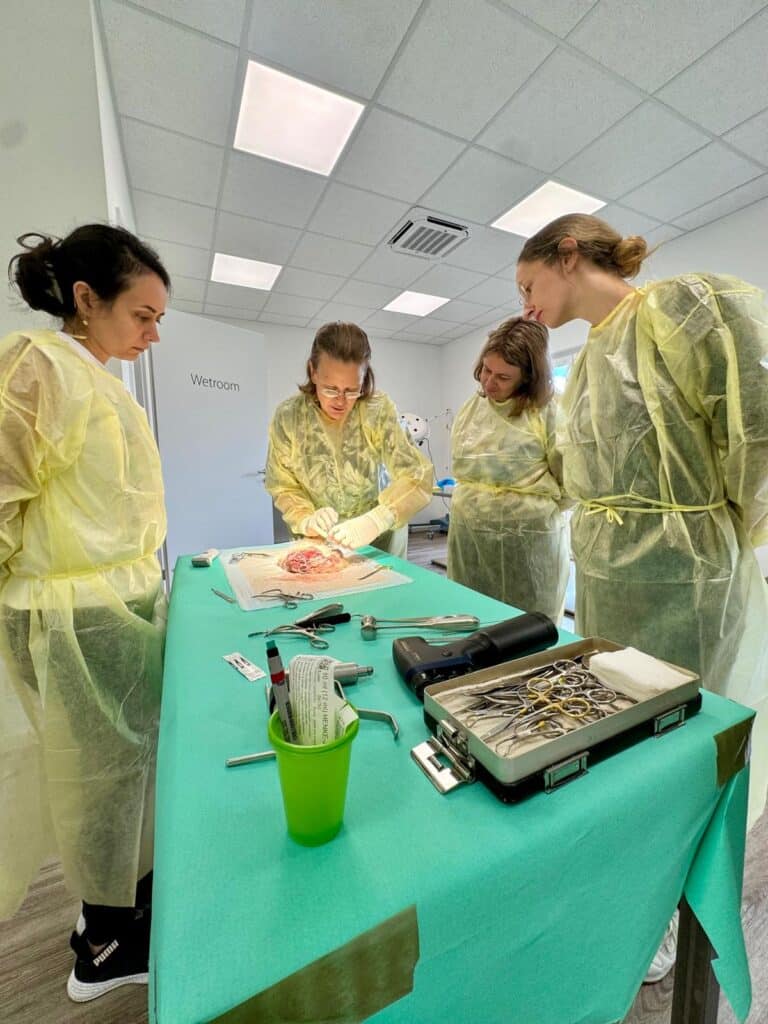
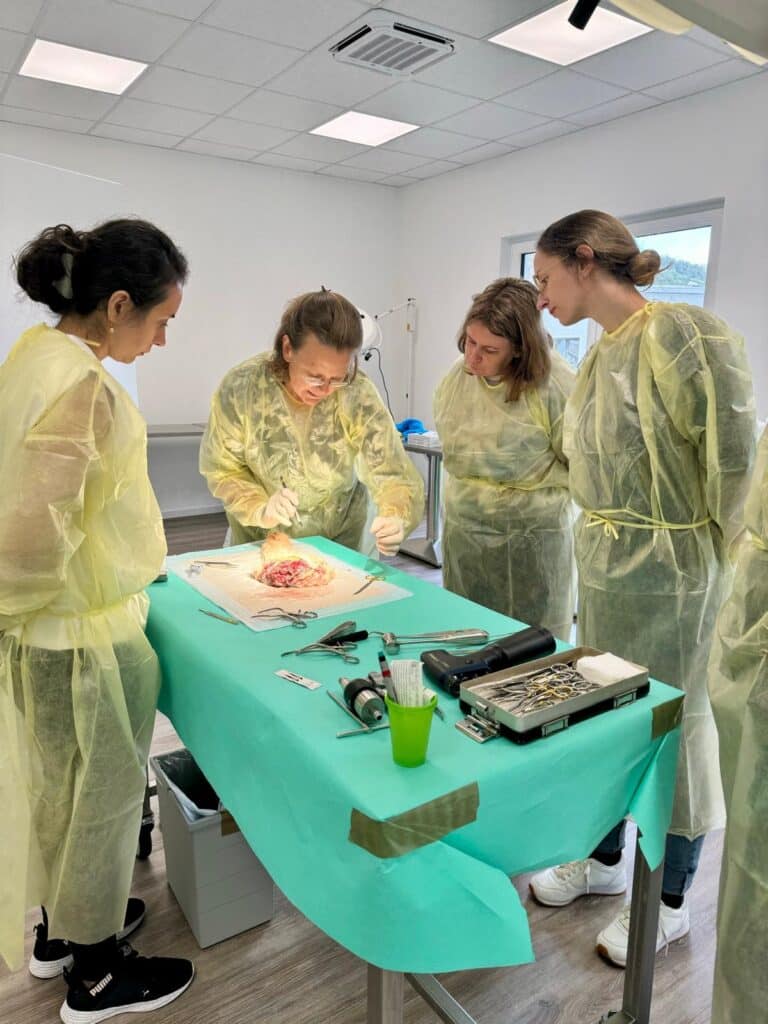
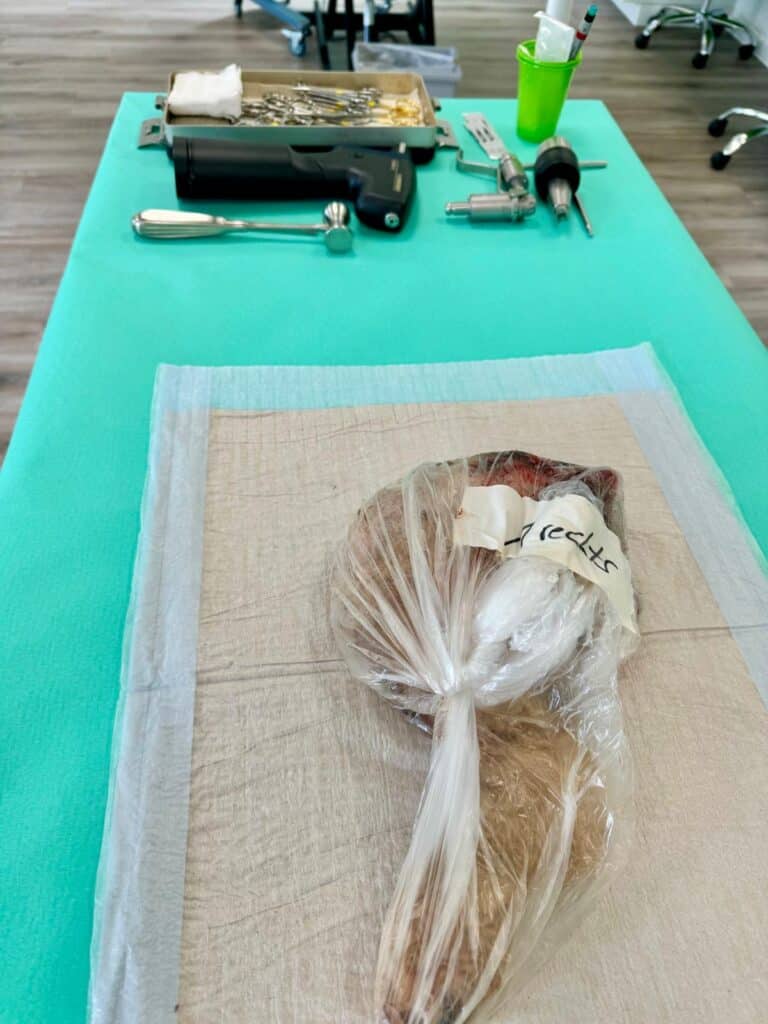

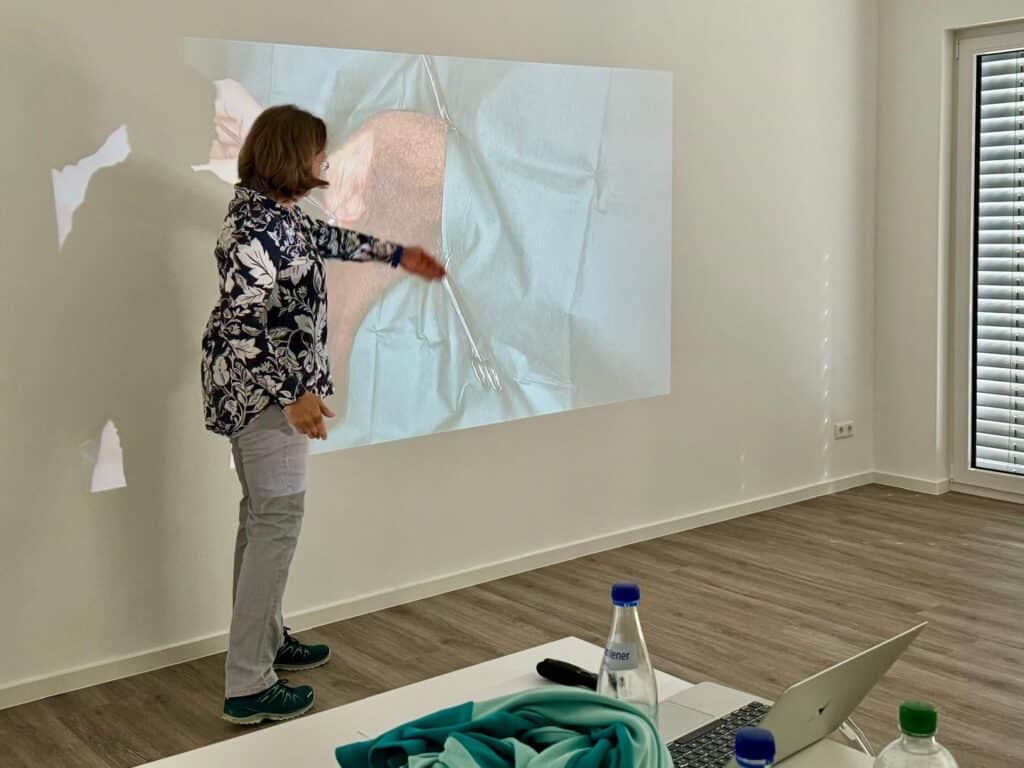
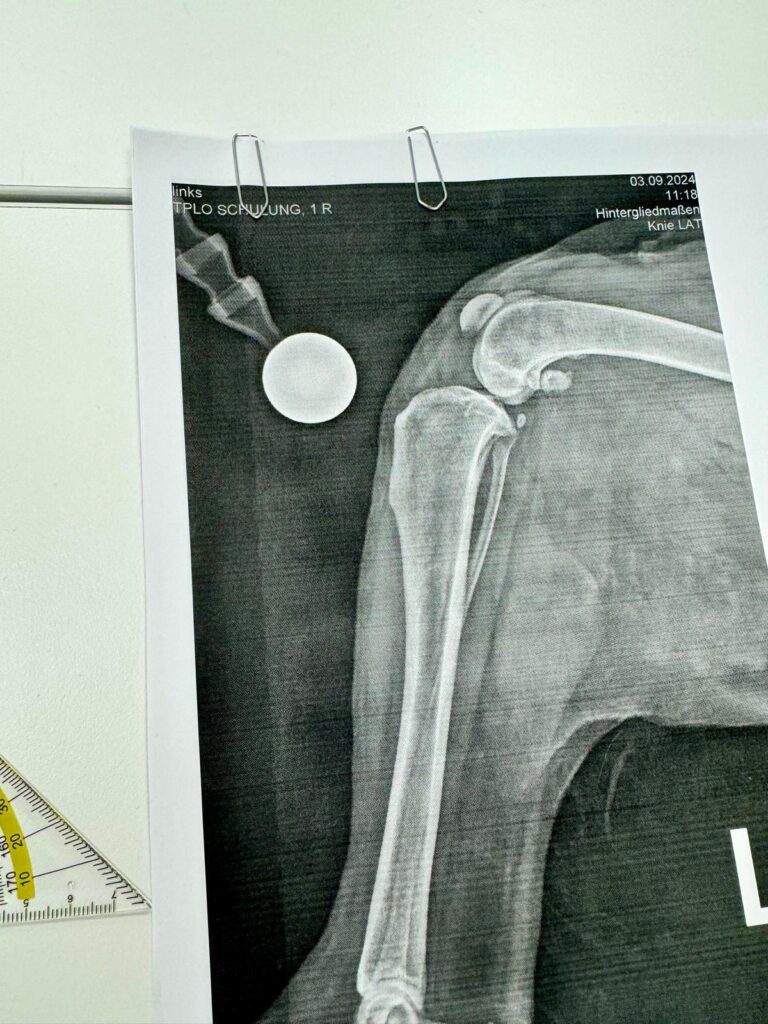
2. What is TPLO?
2.1 Definition and purpose of TPLO (Tibial Plateau Leveling Osteotomy)
TPLO is a surgical procedure specifically designed to treat cruciate ligament tears in dogs. The primary purpose of this surgery is to alter the biomechanics of the knee joint to minimize stress on the cruciate ligament and restore joint function.
2.2 Diseases treated with TPLO
TPLO is primarily performed for cruciate ligament tears , which are common in dogs and cause instability and pain in the knee joint. The surgery helps prevent long-term consequences such as arthritis and lameness.
2.3 Anatomy of the dog's knee joint and cruciate ligament rupture
The dog's knee joint is made up of various ligaments, of which the anterior cruciate ligament plays a central role in stabilizing the joint. A torn cruciate ligament leads to instability, which significantly limits the dog's mobility.
3. Importance of TPLO in veterinary care
3.1 Frequency of cruciate ligament injuries in dogs
Cruciate ligament tears are one of the most common orthopedic diseases in dogs, especially in large and active breeds. If left untreated, these injuries lead to chronic pain and limited mobility.
3.2 Advantages of TPLO over other surgical procedures
Compared to other surgical methods, such as the lateral suture technique, TPLO offers more stable and long-term results. Joint function recovery is usually quicker and the risk of postoperative complications is lower.
3.3 Long-term prognosis after TPLO surgery
The prognosis after TPLO surgery is usually very good. With proper post-operative care and rehabilitation, the dog can often return to normal activity without experiencing lasting limitations.
4. Practical implementation of TPLO surgery
4.1 Patient preparation and diagnosis
Before any TPLO surgery, a thorough diagnosis is required to assess the condition of the cruciate ligament and surrounding structures. The dog is prepared under general anesthesia and preoperative x-rays are taken to determine the exact angle of the incision.
4.2 Step-by-step explanation of the operation
During the operation, the angle of the tibia is adjusted to eliminate stress on the anterior cruciate ligament. This is done by inserting a metal implant that stabilizes the tibia in its new position.
4.3 Postoperative care and rehabilitation
Careful follow-up care is required after surgery. This includes pain management, exercise therapy and regular check-ups to ensure proper healing of the knee joint.
5. TPLO training at the doc4pets Academy
5.1 Introduction of the doc4pets Academy
The doc4pets Academy is a leading training center for veterinarians that offers specialized training in various areas of veterinary medicine. The hands-on courses allow participants to deepen their surgical skills and learn new techniques.
5.2 Training program and content of the TPLO training
The TPLO training included both theoretical and practical modules. Under the guidance of PD Dr. Bianca Hettlich, the participants learned the precise steps of the TPLO operation and carried out practical exercises on models in order to directly apply what they had learned.
5.3 Participant profile and requirements for participation
The training was aimed at experienced veterinarians who already had basic knowledge of orthopedic surgery. Prerequisites for participation were completed veterinary training and practical experience in the surgical field.
6. Professional expertise and guidance
6.1 Introduction of the lecturers and experts of the doc4pets Academy
PD Dr. Bianca Hettlich, who led the training, had many years of experience in the field of orthopedic surgery. As a recognized expert in the field of TPLO surgery, she provided participants with valuable insights and practical tips on how to perform the operation.
6.2 Professional background and experience in the field of TPLO surgery
Dr. Hettlich explained the biomechanical basis of TPLO in detail and explained which factors are crucial for the success of the operation. Their extensive experience performing TPLO operations helped participants develop a deeper understanding of the technique.
6.3 Training methods and practical exercises during training
The training consisted of a combination of lectures, discussions and practical exercises. The participants carried out operational steps on models under supervision in order to internalize the technology and gain the necessary confidence for its use in practice.
7. Case studies and experience reports
7.1 Case study of a TPLO operation from practice
Dr. Hettlich presented a case study of a successful TPLO surgery that walked participants through the entire process of the surgery - from preoperative diagnosis to postoperative follow-up care.
7.2 Experience reports from veterinarians and surgeons
Former participants of the course reported on their experiences with the TPLO training and how they were able to apply what they learned in their practice. Many said the practical exercises were crucial to their understanding and confidence in carrying out the operation.
7.3 Importance of practical exercises for learning success
The practice-oriented exercises were a central part of the training. They enabled the participants to immediately apply what they had learned theoretically and thus consolidate their skills under realistic conditions.
8. Future developments in TPLO surgery
8.1 New techniques and technologies in TPLO surgery
New technologies and improved implants were introduced that made TPLO surgery even safer and more efficient. These developments helped further reduce the risk of complications and shorten healing time.
8.2 Further development of materials and implants
The continuous development of the materials and implants used played an important role in improving surgical results. The modern implants offered more stability and reduced the risk of implant failure.
8.3 Importance of further training in surgery for veterinary success
The importance of regular continuing education was emphasized as medical techniques and standards continue to evolve. Participation in such training is essential for veterinarians who want to provide their patients with the best possible care.
9. Conclusion
The TPLO Practical Performance is a major surgical technique used to treat cruciate ligament injuries in dogs. This method has proven to be extremely effective in veterinary medicine as it modifies the biomechanical loads in the knee joint, thereby restoring the stability of the joint. The TPLO practical implementation makes it possible to relieve the anterior cruciate ligament and help the dog achieve better and pain-free mobility.
On September 9th, 2024, a specialized training course on TPLO practical implementation took place at the doc4pets Academy in Idar-Oberstein. Under the expert guidance of PD Dr. Bianca Hettlich gave veterinarians comprehensive insights into the theory and practice of TPLO practical implementation. The event offered a unique opportunity to learn surgical technology in a practical environment. The focus was on the practical implementation of TPLO, as it is considered the standard procedure for cruciate ligament tears.
The participants in the training acquired in-depth knowledge through practical exercises in order to be able to safely apply the TPLO practical implementation in their daily practice. PD Dr. Bianca Hettlich explained in detailed steps how the TPLO practical implementation is successfully implemented and emphasized the importance of careful patient preparation and postoperative care. As part of the training, the most modern methods and technologies were presented, which make the TPLO practical implementation even more effective.
Particular emphasis was placed on the precise execution of the TPLO practical implementation, as this is crucial for the success of the operation. Participants were given the opportunity to practice under realistic conditions and improve their surgical skills. The practical implementation of TPLO requires precise planning in which the alignment of the shinbone is adjusted using a special cutting angle. An implant is used to ensure the stability of the joint.
Another highlight of the training was the discussion about new developments in the practical implementation of TPLO. Innovative implants and technologies were presented that further optimize the healing processes and reduce the risk of complications. The participants were able to benefit from the lecturers' extensive experience and received practical tips on how to improve their own TPLO practical implementation.
As part of the event, practical case studies were also presented, which illustrated the importance of the TPLO practical implementation for the long-term health of the dog. These examples underscore that the TPLO practice is one of the most reliable methods to successfully treat cruciate ligament injuries. The advantages of this technique over alternative procedures such as the lateral suture technique have been clearly highlighted.
In summary, it can be said that the TPLO practical implementation was explained in detail in the doc4pets Academy training and taught in a practical manner. Veterinarians interested in practicing TPLO were given an excellent opportunity to improve their skills. The participants were able to learn the practical implementation of TPLO under professional guidance and were thus optimally prepared for their future tasks.
With this event, the doc4pets Academy once again demonstrated that TPLO practical implementation is one of the central topics in modern animal surgery. The further development and application of the TPLO practical implementation will continue to play an important role in the future in sustainably improving the quality of life of dogs with cruciate ligament injuries.
The TPLO practical implementation remains a core element of modern veterinary surgery, particularly in the treatment of cruciate ligament injuries in dogs. By adjusting the biomechanics of the knee joint achieved through the TPLO hands-on practice, veterinarians can significantly improve the healing process of their patients. The training in the doc4pets Academy on September 9th, 2024 impressively showed that the TPLO practical implementation requires not only theoretical knowledge, but also practical skills in order to be successfully applied.
A central element of the training was the comprehensive discussion about postoperative care and rehabilitation, which are crucial to the success of the TPLO practical implementation. It was highlighted that careful follow-up care, including exercise therapy and regular check-ups, helps to optimize the long-term results of TPLO practice. In this context, participants who learned the TPLO practical implementation were also trained in how to deal with possible complications and how to avoid them.
The doc4pets Academy placed particular emphasis on providing veterinarians with a deep understanding of the anatomical structures that are modified during the TPLO practical implementation. Correct execution of this surgery requires a precise understanding of the knee joint anatomy, particularly the tibia and anterior cruciate ligament. An incorrect cutting angle or incorrect positioning of the implant could lead to postoperative problems, which is why the exact technique is of central importance when performing TPLO.
In addition, the training pointed out the importance of continuous training in the practical implementation of TPLO. Veterinary medicine is constantly evolving and it is essential that veterinarians stay up to date with the latest technology. The practical implementation of TPLO requires constant practice and refinement of the technique to ensure optimal results for patients.
Another important aspect of the event was the communication of the latest research results and technological advances in the field of TPLO practical implementation. Modern implants and improved surgical techniques help shorten healing time and restore joint strength more quickly after surgery. The participants in the training had the opportunity to get to know these new materials and technologies and test them in practice, which will significantly improve the quality of their own TPLO practical implementation.
The professional exchange between the participants also played an important role. Many of the veterinarians in attendance had previous experience of the TPLO practical implementation and the event offered them the opportunity to deepen their knowledge and benefit from the experiences of others. This exchange of specialist knowledge and practical tips helped to promote the collective understanding of the TPLO practical implementation and to further increase the competence of the individual participants.
Overall, it can be said that the TPLO practical implementation was treated intensively and practically in the training at the doc4pets Academy. The comprehensive theoretical and practical content enabled participants to learn and refine TPLO practical implementation at the highest level. The importance of TPLO practical implementation for modern veterinary medicine cannot be overemphasized, as it represents one of the most reliable and effective methods for treating cruciate ligament tears in dogs.
With this training, the doc4pets Academy has made an important contribution to the further training of veterinarians who have specialized in TPLO practical implementation or who would like to develop further in this area. The future of TPLO practical implementation will undoubtedly be characterized by further innovations, and the training in Idar-Oberstein has optimally prepared the participants for the challenges ahead.
